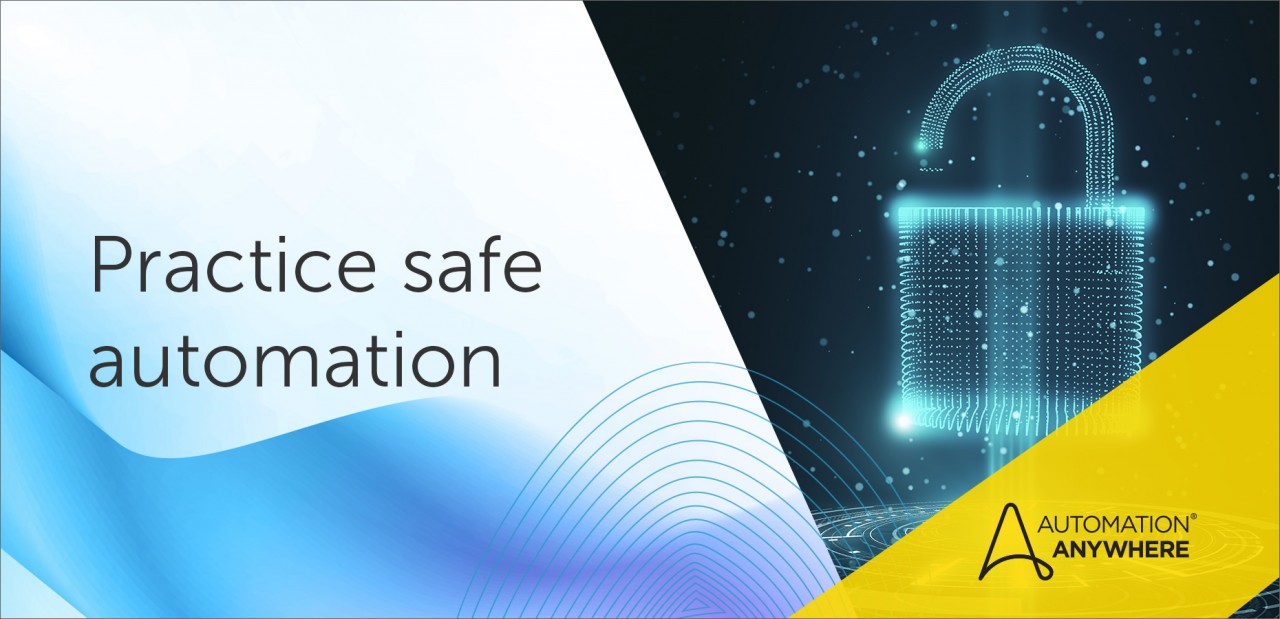 Back
Back
Security 101—5 Requirements for a Secure Enterprise Automation
Enterprises all over the world have now come to terms with the new reality of remote work. In addition to purchasing external monitors, standing desks, and webcams for their employees, enterprises are investing in automation tools to help the employees be as efficient as possible in their home office. In fact, studies have shown that enterprises are adopting intelligent automation faster since the pandemic began than before to keep business moving forward. With this rapid increase in automation adoption, the need has arisen to re-evaluate the existing security policies so that no accidental lapses occur in the era of remote work.
Here are five requirements every enterprise must evaluate to ensure its infrastructure is not at risk.
Application security
When a user requests new software, the internal IT usually runs an audit on the application to verify its compatibility with existing infrastructure and check its security. Part of this exercise involves verifying the type of information collected and retained by the application and the type of encryption used, if any, to store the data and to protect it during transit. The same set of requirements should also be taken into consideration when trying to utilize an automation platform.
Compliance management
Compliance assessment and management involves evaluating an enterprise’s systems and processes to ensure they adhere to the industry standards and regulatory requirements. It’s a good practice to ensure this is an ongoing exercise within the organization. As the enterprise grows, different departments implement various solutions to assist in that scale. It’s crucial to verify that the new applications don’t jeopardize the enterprise’s multiple compliances. In heavily regulated industries such as health sciences or finance requiring organizations to adhere to compliance standards, including HIPAA, PCI-DSS, and FISMA, non-compliance can lead to fines imposed and other penalties.
Identity and access management
There are multiple layers involved with identity and access management. First, there is providing employees with the required access to applications via licenses and other means. Second is the level of control they have in the applications. It’s a good practice to provide all new users the lowest level of access and add more permissions as needed. Implementing an active directory and single sign-on to manage employee access adds a layer of security. If employees use automation actively to run processes, make sure the credentials required to complete them are securely stored in an encrypted format.
Training and awareness
The proverb “a chain is only as strong as its weakest link” holds true for security as well. All it takes to compromise a system is for users to write down their system access credential on a sticky note and misplace it. This situation can be avoided with an ongoing training program on security awareness and practices. Engineers and developers should also undergo a refresher on best development practices to ensure their output does not inadvertently affect application security.
Disaster recovery
Disaster recovery refers to an organization’s plan for business continuity in unforeseen circumstances that lead to disruption of day-to-day operations. Those circumstances can include natural calamities that cause physical property damage and cyberattacks that lead to a loss of data. In a nutshell, the only way to recover from such incidents is to have multiple backups in place. The time required for backups to kick in and for business to resume as usual should be outlined in a disaster recovery policy. What if the enterprise relies on multiple third-party applications to complete processes, analyse data, and more? In that case, IT should also examine the vendor’s HA/DR policy to ensure all systems in place help them stay compliant.
Maintaining security at an enterprise is no easy feat, especially for the modern-day organization that relies on multiple applications to keep the wheels turning. It helps to have an automation platform that was built from the ground up with an enterprise’s security requirements in mind.
by Atul Ashok at Automation Anywhere

